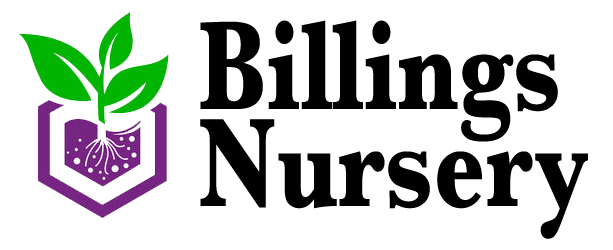Glossary of Common Nursery Terms
Aril–An extra covering of the seed of some plants outside the true seed coats.
B&B(Balled & Burlapped)–Plants grown in the ground and then dug either by hand or a tree spade with the root ball (including the undisturbed surrounding soil) intact. The root ball is then bound in burlap or a similar mesh fabric. A wire basket may or may not be used.
B&P (Balled & Potted)–Plants dug with a ball of earth and then placed in a container in lie of burlapping.
Bare-Root (B.R.)–Plants harvest from the soil or growing medium with the soil removed.
Branch–An outgrowing shoot, stem, or twig that grows from the main stem or trunk.
Caliper–The diameter of a tree measured at a point 6” above the ground line if the resulting measurement is no more than 4”. If the resulting measurement is more than 4”, the measurement is made at a point 12” above the ground line.
Carpel–A single-celled ovary or seed vessel.
Cane–A primary stem which starts from the ground at a point not higher than ¼ the height of the plant.
Cascading–Generally a horizontal, weeping form.
Collar–The line of junction between the root of a plant and its stem or trunk.
Corm–A bulblike part of a plant consisting of the dilated base of the stem.
Crown–The portion of a tree comprised of the branches.
Eye–A dormant bud on a corm, tuber, or root division from which a stem will develop when the corm , tuber, or root division is planted.
Fan–A descriptive term for the growth habit of certain perennials (Iris & Day lilies, for example) which have no vertical stem because the leaves originate from the rhizome.
Fastigiate–Narrowly upright, columnar. Probably will not become half as wide as tall.
Field Potted–See Balled and Potted (B&P).
Graft–A small shoot or scion of a tree is inserted in another tree and becomes part of it. However, the “grafted” scion retains the characteristics of its own parent. This method of propagation is widely used, especially in fruit trees.
Grow Bag–Also called “in-ground fabric bags”; porous bags into which liner plants are placed for growing on to landscape size. Root growth through the bag is restricted, resulting in a compact, fibrous root ball within the bag.
Growth Habit–The mode or rate of growth, general shape, mature size, and branching structure of a plant, including the changes which take place seasonally during its life cycle (e.g.,deciduous, flowering, fruiting, etc.).
Height–Unless otherwise specified, the vertical distance between the collar and the top of the stem, measured in the plant’s natural position.
Medium–A mixture of two or more ingredients such as soil, peat moss, perlite, ground bark,etc., in which a container plant has been grown.
Node–A sort of knot or protuberance on a stem where leaves arise.
Pectinate–Resembling the teeth of a comb, serrated.
Pendulous–Weeping; it will usually grow along or close to the ground unless it is staked.
Petiole–The stalk connecting the blade of the leaf with the branch or stem.
Plug–A cylinder of medium in which a plant is grown. The term is generally used to describe seedlings and rooted cuttings which have been removed from the container but with the medium held intact by the roots.
Prostrate–Ground creeping habit, becomes much wider than tall. Height will usually not exceed three feet.
Root Ball–The intact ball of earth or growing medium containing the roots of a nursery plant.
Root Pruning–The systematic pruning of roots of nursery plants growing in the field in order to stimulate branching of the roots and the production of fibrous roots.
Rootstock-The term used to describe the part of a plant, including the collar and roots, on which another variety has been budded or grafted. (The same as “under stock”).
Scion–A shoot or twig cut for the purpose of being grafted upon some other tree or for planting.
Spread–A term used to indicate the horizontal width of a shrub or the crown of a tree.
Spreading–Horizontal branching. When referring to evergreens, the plant will generally be twice as wide (or more) as tall at maturity.
Stamen–The male fructification organ in a plant; it is situated immediately within the petals and composed of the filament, the anther, and the pollen.
Standard–The plant is grafted on a standard (a rootstock).
Trunk–The portion of a stem or stems of a tree before branching occurs.
Understock–The term used to describe the part of a plant, including the collar and roots, on which another variety has been budded or grafted. (The same as “rootstock”).
Whip–A young tree without branches (in some species and grades, spurs may be present).
Whorl–The arrangement of three or more buds, leaves, flowers, or twigs at the same node.

